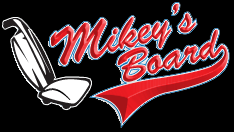Tony,
The crystallization in the bottom of the O2 jugs is salt crystals forming. This does not take away from the cleaning ability of the O2 System. I can cut the formula about 15% to stop this, but I am unwilling to do this, so to keep my formula at maximum strength, this is a byproduct. Having crystals formed in the bottom of a chemical jug is a good indication that you are receiving a maximum strength chemical. There is no need to try and dissolve the crystals. The excess salt crystals in the O2 System is from the high concentration of sodium borate. I just went back and looked at one of my previous posts with some information about sodium borate, and I am going to repost it here.
Sodium Borate is what we are using as our oxygen product in our O-2
Pre-Spray. I'm going to give you some information on Sodium Borate, which is commonly known as borox. We make no claim of disinfecting with the O-2 System, however the properties of Sodium Borate has disinfecting abilities and it is a very stable product. I just thought that I would post some interesting information about it. I can remember as a child, my mother used it when cleaning white linen and it would really make it bright.
Chemistry of Borax or Sodium Borate
What Is Borax?
Borax (also known as sodium borate decahydrate; sodium pyroborate; birax; sodium tetraborate decahydrate; sodium biborate) is a natural mineral
compound (Na2B4O7 • 10H2O). It was discovered over 4000 years ago. Borax is usually found deep within the ground, although it has been mined near the surface in Death Valley, California since the 1800s. Although it has numerous industrial uses, in the home borax is used as a natural laundry booster, multipurpose cleaner, fungicide, preservative, insecticide, herbicide, disinfectant, dessicant, and ingredient in making 'slime'. Borax crystals are odorless, whitish (can have various color impurities), and alkaline. Borax is not flammable and is not reactive. It can be mixed with most other cleaning agents, including chlorine bleach.
How Does Borax Clean?
Borax has many chemical properties that contribute to its cleaning power. Borax and other borates clean and bleach by converting some water molecules to hydrogen peroxide (H2O2). This reaction is more favorable in hotter water. The pH of borax is about 9.5, so it produces a basic solution in water, thereby increasing the effectiveness of bleach and other cleaners. In other chemical reactions, borax acts as a buffer, maintaining a stable pH needed to maintain cleansing chemical reactions. The boron, salt, and/or oxygen of boron inhibit the metabolic processes of many organisms. This characteristic allows borax to disinfect and kill unwanted pests. Borates bonds with other particles to keep ingredients dispersed evenly in a mixture, which maximizes the surface area of active particles to enhance cleaning power.


